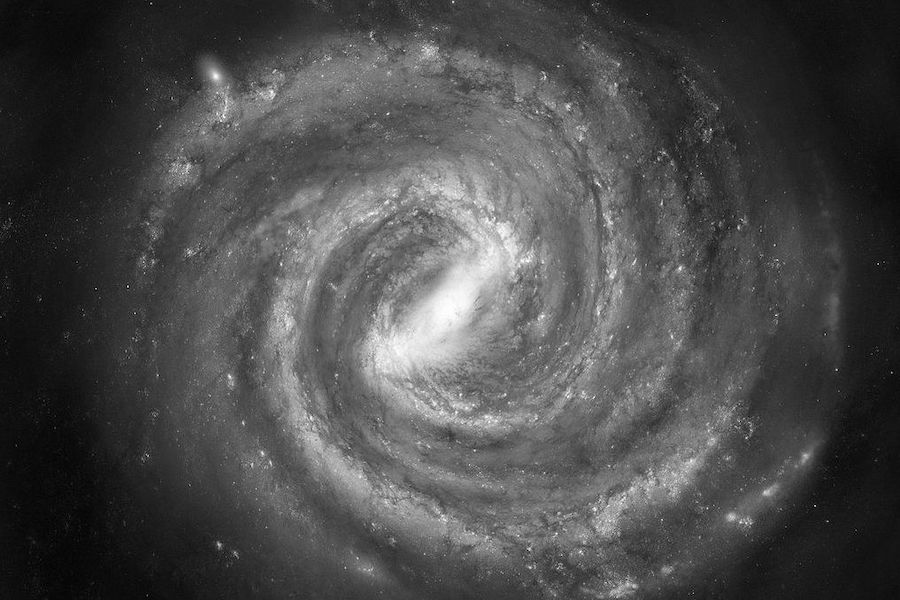This article was originally published in May 2019.
So that we don’t take real estate, economics and investing too seriously and to keep our daily lives in perspective, here is our very own Property Chronicle NASA astrophysicist and his column Nothing Really Matters.
Based on tons of scientific data and decades of research, here is an artist’s impression of the Milky Way Galaxy, as seen from above the galactic “North pole”. Credit: NASA. All of the basic elements have been established including its spiral arm pattern and the shape of its central bulge of stars. To directly answer this question, however, is a difficult, if not impossible, task. The problem is that we cannot directly see every star in the Milky Way because most are located behind interstellar clouds from our vantage point in the Milky Way. The best we can do is to figure out the total mass of the Milky Way, subtract the portion that is contributed by interstellar gas and dust clouds ( about 1 – 5 percent or so), and then divide the remaining mass by the average mass of a single star.
From a number of studies, the mass of the Milky Way inside the orbit of our sun can be estimated to an accuracy of perhaps 20 percent as 140 billion times the mass of the Sun, if you use the Sun’s speed around the core of the galaxy. Radio astronomers have detected much more material outside the orbit of the Sun, so the above number is probably an underestimate by a factor of 2 to 5 times in mass alone.
Now, to find out how many stars this represents, you have to divide by the average mass of a star. If you like the sun, then use ‘one solar mass’ and you then get about 140 billion sun-like stars for what’s inside the sun’s orbit. But astronomers have known for a long time that stars like the sun in mass are not that common. Far more plentiful are stars with half the mass of the sun, and even one tenth the mass of the sun. The problem is that we don’t know exactly how much of the Milky Way is in the form of these low-mass stars. In text books, you will therefore get answers that range anywhere between a few hundred billion and as high as a trillion stars depending on what the author used as a typical mass for the most abundant type of star. This is a pretty embarrasing uncertainty, but then again, why would you need to know this number exactly?
The best estimates come from looking at the motions of nearby galaxies such as a recent study by G. R. Bell (Harvey Mudd/USNO Flagstaff), S. E. Levine (USNO Flagstaff):
Using radial velocities and the recently determined proper motions for the Magellanic Clouds and the dwarf spheroidal galaxies in Sculptor and Ursa Minor, we have modeled the satellite galaxies’ orbits around the Milky Way. Assuming the orbits of the dwarf spheroidals are bound, have apogalacticon less than 300 kpc, and are of low eccentricity, then the minimum mass of our galaxy contained within a radius of 100 kpc is 590 billion solar masses, and the most likely mass is 700 billion. These mass estimates and the orbit models were used to place limits on the possible maximum tangential velocities and proper motions of the other known dwarf spheroidal galaxies and to assess the likelihood of membership of the dwarf galaxies in various streams.
Again, you have to divide this by the average mass of a star…say 0.3 solar masses, to get an estimate for the number of stars which is well into the trillions!

Another factor that confuses the problem is that our Milky Way contains a lot of dark matter that also produces its own gravity and upsets the estimates for actual stellar masses. Our galaxy is embedded in a roughly spherical cloud of dark matter (shown in the artists rendering above courtesy ESO) that is strongly concentrated towards the galactic
This article was previously published at astronomycafe.net and is here republished with permission.








